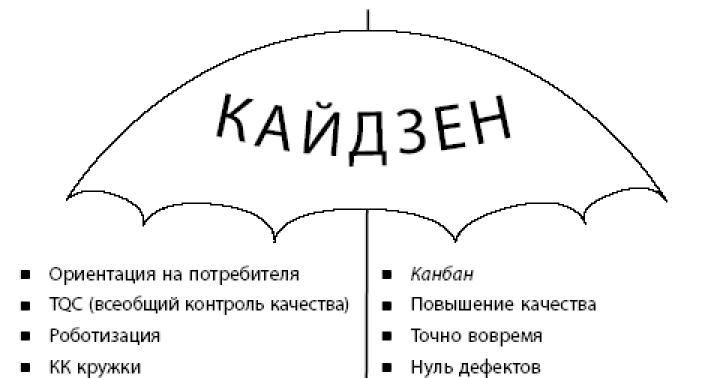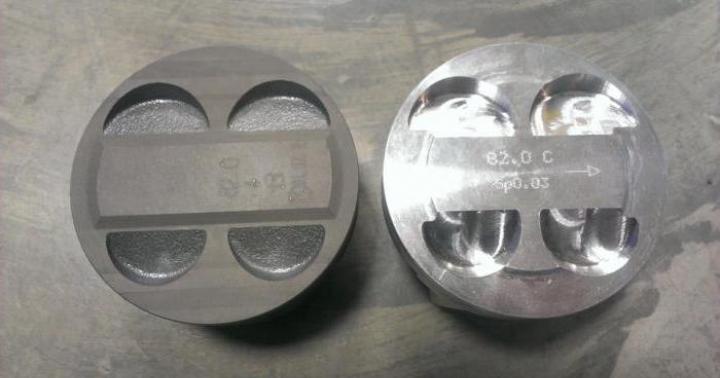Instructions
When you are driving on a highway or on a divided road, you may come across a sign telling you where to turn around. It’s called a “turning point.” Most often, such jumpers between traffic flows are made in pairs: first you will pass the section where oncoming cars are turning, and then you will see a sign for you - 6.3.1. In most cases, this turning point only has one lane, so you need to stick to the left shoulder.
There is another sign on which the reversal itself is drawn. It indicates not only where you can turn around, but the extent of this zone. In the rules, this sign is numbered 6.3.2. In this situation, a given section of road may have two or even more lanes. You need to be careful when driving in the leftmost lane in this situation. Those who are driving to the right of you have priority over you, that is, you must let them pass. If you drive fast or don't like to give way, choose the rightmost path.

You can also make a U-turn if there are any signs permitting a left turn. These may be mandatory signs: a blue circle with a white arrow indicating the direction of movement. For example, this could be sign 4.1.3, which shows you only two options for further movement: left and back.

If you see sign 4.1.5 on the side of the road, then you can drive in the indicated directions or make a U-turn.

Sign 4.1.6 does not allow you to go straight. But you don't necessarily have to turn. Nobody limits your desire to turn around and leave in the direction from which you came. The signs listed above are valid at the intersection in front of which you saw them.

In addition to the round signs on a blue background, you should also pay attention to the “lane direction” signs before making a U-turn. Such signs have a square or rectangular shape. There are white arrows on a blue background to show you which direction you can go in the selected lane. The principle is the same as with mandatory signs: if a left turn is allowed, then you can also make a U-turn. Moreover, if the sign allows you to turn left from the second lane, then you can only make a turn from the far left lane.

This happens due to the fact that drivers do not know how to maneuver their cars competently. They do not understand the rules of the road when turning left, making a U-turn, or performing other complex actions. Therefore, each car owner must first carefully study the traffic rules so as not to violate their clauses.
A maneuver involving a left turn is considered quite simple, so to carry it out correctly you only need to know simple and accessible rules.
Important! Competent driving makes it possible to avoid accidents, fines and problems with traffic police officers.
Rules for making a left turn, see this video:
The basic rules include:
- definitely before turning or you need to take the right lane, namely the far left;
- The machine must be positioned so that it is not in any way;
- if the maneuver is performed in a large vehicle, then it is allowed to deviate slightly from the above rules, but only on condition that there is no danger for other road users.
Before turning left, you must carefully study all the signs on the road to make sure there are no signs prohibiting this process.
These signs include:
- 3.18.2. If it is present, it is strictly forbidden to turn left, but it is allowed to make a U-turn or turn right.

No left turn sign. Photo: s020.radikal.ru
- 11-12,14. These signs are represented by white arrows located on a blue background. They indicate which one. Drivers should be aware of them before performing any maneuver, as the signs may prohibit turns or U-turns.
- 7. This sign is installed on a one-way road. It indicates that it is only allowed to move to the right, so if the driver turns in the other direction, he will end up in oncoming traffic.
- 5.11-5.14. Signs indicating the presence of a lane specifically designated a. If they are present, it is not allowed to turn left or turn around.
- 3.1-2. These signs highlight separate zones in which certain maneuvers are allowed.
Thus, having studied the rules and signs that allow and prohibit turning left, you can carry out this process quickly and safely.
Important! Difficulties turning left can arise at or outside an intersection, so every driver must understand the peculiarities of maneuvering.
The main nuances of proper maneuvering include:
- Initially, it is important to change lanes to the left in order to maneuver from the right side of the road;
- a light signal turns on, indicating that the driver of the car is about to make a turn in a specific direction;
- Initially, all cars moving in the oncoming direction are allowed to pass, and only then the turn is made safely, slowly and carefully.
The presence of a traffic light at an intersection greatly simplifies the turning procedure, as it allows you to maneuver quickly and easily.
When it is not permissible to make a turn or turn
It is not allowed to turn in the following situations:
- there is a sign 3.18.2;
- , which are regulated, where there is no special sign thanks to which you can make a turn, if on the leftmost lane there is a sign according to which you can only move straight.
If it is necessary to make a U-turn, then the car owner must understand where it is forbidden to make it.

Trajectory for making a left turn.
This maneuver is not allowed in the following situations:
- there are no signs that allow U-turns at the intersection;
- there is a special sign prohibiting turning or turning around;
- there is a bus stop near the place where the maneuver is planned to be performed;
- the car is moving inside a tunnel or on a bridge;
- there is poor visibility, so such an action may lead to an accident;
- exists between lanes.
If there is a sign on the basis of which it is not allowed to make a U-turn, but the markings allow this maneuver, still performing it will be regarded as a serious offense for which strict penalties are imposed.
Important! Signs that prohibit these maneuvers are not taken into account by minibuses.
Certain signs may have a yellow background and are therefore temporary.
What questions do car owners usually have?
Many drivers have serious and difficult questions regarding the correct turn. The most popular include:
- If you can make a left turn, can you make an automatic U-turn?
Yes, if there are no obstacles to turning, then the turn is carried out without violating traffic rules. - Is it possible to make a U-turn if you can't turn left? This issue is considered complex and causes a lot of controversy.
For example, a sign 3.18.2 is often installed on the road, prohibiting turning. It is usually used in areas where congestion and other problems with the easy and fast movement of vehicles often occur.
It exclusively prohibits left turns, and does not impose any restrictions on other maneuvers. Therefore, it is permissible to make a U-turn in such a situation.
How to make a left turn correctly in a city? Watch the video tutorial in this video:
- Is it possible to make a U-turn if there are solid lines along the edges of the tram lines?
It is permissible to make a U-turn if these paths are at the same level as the road, but if there are markings that cannot be crossed, this maneuver is prohibited.
In any case, when performing any actions on tram tracks, it is important to take into account the possibility of traffic of cars or trams. - Is it possible to make a U-turn if there is a sign allowing straight ahead only?
If there is a sign 4.1.1 on the road, then cars can only move straight.
If there is one at an intersection, then it is not allowed to turn around or turn in any direction.
Important! Often the cause of an accident is that the driver took the theoretical traffic rules exam too long ago, so he forgot some important nuances or is not at all aware of the recently introduced changes, so the task of every car owner is to constantly study all the traffic rules.
What are the penalties for violations?
If a driver violates the rules of turning left or making a U-turn, and this is recorded by the traffic police, then he is given a certain punishment, and it depends on the severity of the violation:
- if during a turn or turn the trajectory is chosen incorrectly, or if the markings are crossed, then a fine of up to 1.5 thousand rubles is imposed;

Fine for violating traffic rules.
- if while driving a car enters the oncoming lane, the fine increases to 5 thousand rubles, and if such a violation is repeated at all, this leads to deprivation of the citizen’s rights for a period of 6 months.
Thus, every car owner should know how to make a left turn correctly.
How to pay a fine without a fee? Read on
This maneuver is considered quite simple, but to perform it competently, you still need to carefully study the markings, signs and conditions on the road so that the action does not lead to an accident.
Only those drivers who are not fully familiar with traffic rules believe that the road can be unpredictable.
All vehicle maneuvers from the start of movement to the left turn and U-turn, performed in accordance with the established rules, will not cause inconvenience to any of the road users.
It is allowed to turn the car 180 0 in any place where there are no road markings prohibiting this action or signs limiting this maneuver.
This is the case when the car did not complete the maneuver and, having stopped, created an obstacle to traffic moving in the transverse direction.
Creating a traffic jam threatens the violator with an administrative penalty in the amount of 1,000 rubles.
The same fine is imposed if the driver, when turning or turning, does not give way to vehicles that have the right of way.
The wrong choice of row to start a turn or U-turn will result in a warning or a fine of 500 rubles for the driver. You will have to pay the same money if the turn was made in a prohibited place. Ignoring signs and markings prohibiting a U-turn or a left turn is punishable by a fine ranging from 1,000 to 1,500 rubles.
According to statistics, 70% of accidents on the road occur due to the inattention of road users. A fast flow of cars sometimes reduces the level of attentiveness of road users, which is a provocation of an emergency situation. Most violations in this category are somehow related to the “Left Turn” sign. Every vehicle owner should study the traffic rules regarding this issue in more detail.
What types of fines are provided for a no turn sign?
Administrative penalties are determined depending on the level of public danger of the offense. According to the legislation of the Russian Federation, the following system of sanctions applies for non-compliance with the requirements for a safe turn:
- An administrative penalty in the amount of 1,000 to 1,500 rubles - performing a U-turn or turning maneuver within the coverage area of the “Go straight ahead” sign. It is important to consider that this rule is canceled if the driver turns right to enter the adjacent territory.
- A fine of 1,000 to 1,500 rubles is for making a U-turn or turning left in the area covered by prohibitory signs.
- A penalty of 500 rubles for turning right within the coverage area of the sign prohibiting this maneuver.
- A fine of 1,000 rubles - the owner of the vehicle did not have time to give way to another traffic participant when making a U-turn.
It is worth noting that for illegally performing a turning maneuver, a motorist may lose his driver’s license. If there are aggravating circumstances, the driver will lose the right to drive a vehicle for a period of 4 months to six months if, when turning, the vehicle entered a one-way lane of oncoming traffic. If there are mitigating circumstances, the penalty will include a fine of 5,000 rubles.
Go straight ahead sign
A round sign on a blue background “Drive straight ahead” instructs all drivers to move only in a straight direction, excluding the possibility of leaving the road.
Every driver should know the following nuances associated with this traffic regulation sign:
- The requirement of this sign can be legally ignored by drivers of route vehicles.
- If there is a sign “Go straight ahead” at an intersection, the action of the instruction applies only to the intersection of those driveways in front of which this road sign is located.
- If there is a sign outside the intersection, the driver must pay attention to the fact that the instruction is valid until the next intersection. The requirement does not apply only to those motorists who must turn right to enter a yard or other adjacent territory.
It is important to know: deviation from the requirement of the “Go straight ahead” sign can lead to an accident. Thus, drivers often refuse to perform prohibited maneuvers in the lane of oncoming traffic or on one-way roads. Circumstances of this kind can warrant the confiscation of a driver’s license for a period of up to six months.
This sign is often installed in places where the dividing strip breaks. This arrangement prevents dangerous maneuvers that drivers might make in the absence of warning.
No right turns allowed
A prohibitory sign with a crossed out arrow to the right warns the motorist of the danger that he may encounter when choosing this trajectory.
The mandatory nuances associated with this sign include two provisions:
- Drivers of route transport are not required to obey this sign;
- The ban applies only to the intersection in front of which it is located.
Typically, such signs are installed when there is a one-way road adjacent to the intersection. If the ban is violated, the motorist risks getting into a serious accident.
Unintentionally driving onto a one-way road is subject to administrative sanctions such as deprivation of a special right (withdrawal of a driver’s license for up to 6 months).
If, as a result of violating the order, the motorist turns right and continues driving along the lane in the same direction of flow, the fine will not exceed 500 rubles. However, such an offense also carries with it a certain social danger that must be taken into account.
No left turn allowed

Just like the previous signs, plate 3.18.2 only applies to the nearest intersection of roadways and can be ignored by route transport drivers. It is also important to take into account that a motorist can legally make a U-turn within the coverage area of this sign.
The penalty for ignoring this prohibition sign for owners of personal vehicles will be in the form of a fine in the amount of 1,000 to 1,500 rubles. However, when driving into a lane with oncoming traffic, the amount of the sanction will be increased to 5,000 rubles or the penalty will be replaced by deprivation of the right to drive a vehicle for a period of 4 to 6 months.
U-turn prohibited
Despite the fact that the presented sign is very similar to the previous ones, its coverage area extends to the entire intersection of roadways, and not just to the first one in front of which it is installed. The “No U-turn” sign is installed on those sections of the road where making a U-turn could lead to dangerous consequences for both drivers and pedestrians. The fine for ignoring the sign requirement will be 1000-1500 rubles.
What happens if the driver does not give way?
Part two of Article 12.1 of the Code of Administrative Offenses regulates the extent of liability for ignoring the rules for driving through intersections. Motorists who do not give way to road users who have the right of way will be required to pay a fine of 1,000 rubles.
It is worth considering that violation of the rules for driving through an intersection may be regarded as non-compliance with the rules of safe maneuvering. In this case, the driver will be held accountable in the form of a fine in the amount of 500 rubles. Also, the traffic police inspector may limit himself to a warning.


